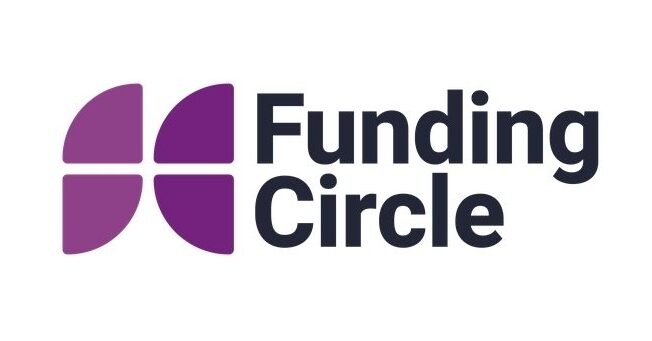The Biden Administration’s recent decision to end the Small Business Administration’s (SBA) decades-long moratorium on licensing new lenders opens the doors for community banks and credit unions to meet the needs of underserved communities, industry representatives believe.
The SBA has lifted the moratorium on licensing new small business lending companies (SBLC). It has also created a new entity called a Community Advantage SBLC and removed the requirement for a loan authorization in the 7(a) and 504 Loan programs. In addition, the SBA amended some regulations governing the 7(a) and 504 loan programs.
The lifting of the moratorium and SBLC changes attracted 119 comments. Most (106) expressed opposition or suggested modifications. The remaining 13 were in support.
SBA addresses nine arguments against lifting the moratorium
Comments fell into nine broad themes:
The proposed rule doesn’t adequately address how CA lenders could transition into Community Advantage SBLCs.
The SBA said it would grandfather current CA lenders.
The new lenders will increase the SBA’s risk, increase subsist costs, and negatively impact borrowers and lenders through higher fees or less authority. Others feared licenses would be granted to fintechs because that sector was implicated in PPP fraud.
Poppycock, the SBA replied.
“SBLCs are defined as non-depository lending institutions, which is not synonymous with fintech,” the final rule document stated. “SBA has for many years provided oversite (sic) to non-depository entities participating in the SBA business loan programs. This includes SBLCs, non-federally regulated lenders (NFRLs), 504 Certified Development Companies (CDCs), and Microloan Intermediaries.”
“In fact, most all lending institutions incorporate financial technology in their delivery of loans and other financial products.”
The SBA cannot provide adequate oversight over lenders
The agency’s assessments suggested otherwise, it replied. It indeed has the capacity.
This won’t help the underserved
The argument is that the SBA isn’t imposing any lending requirements to underserved markets on SBLCs. They have also been vague in defining and identifying capital market gaps for new Community Advantage SBLCs.
Others argue that non-bank lenders offer more flexible and alternative capital avenues than traditional financial institutions. They also focus on the smaller loans incumbents mostly eschew.
Uneven playing field
The SBLCs will have advantages over federally regulated lenders, some fear. Not so, as all lenders must submit credit policies for review as part of their SBA lender application.
SBLCs should have minimum capitalization thresholds
Each lender will be examined to determine a good mix of risk minimization and capital requirements. The SBA will require Community Advantage SBLCs to maintain a loan-loss reserve account.
Challenged assumptions
Some questioned whether allowing decisions determining capital requirements for Community Advantage SBLCs to be made on a case-by-case basis is consistent with the existing statute. The SBA replied that a new SBLC could potentially increase 7(a) lending by 425 loans per year. That estimate is based on an analysis of existing SBA 7(a) lenders over four years ending in 2022.
The proposed rule is too vague or lacking in information
Those wanting more said the SBA should publish application and evaluation processes in the regulations. The agency sees that as overly restrictive, arguing they have the flexibility to respond to pandemics, recessions, and industry-specific issues.
Existing SBLCs will be devalued
“… that by imposing a moratorium on licensing new SBLCs and by restricting the total number of SBLCs to 14 for the last 40 years, SBA has created an oligopoly over the $36 billion a year lending market for the existing SBLCs, which unfairly restricts competition,” the final rule document stated.”
“These comments indicate that expanding the number of SBLC licenses will increase competition and encourage innovation, which benefits the small business.”
“SBA believes Community Advantage SBLCs will increase access to capital in their respective communities,” the decision reads in part. “SBA proposed Community Advantage SBLCs to be nonprofit entities because nonprofit lending organizations often serve communities with capital market gaps SBA intends to fill. Adding Community Advantage SBLCs to the possible types of 7(a) Lenders will also allow existing CA Lenders an opportunity to participate in the 7(a) Loan Program on a non-temporary basis as a Community Advantage SBLC while continuing to meet the needs of underserved communities.”
Minimum capital requirement rules amended
As of Jan. 4, 2024, the current rule states that minimum capital requirements for each SBLC that makes or acquires a 7(a) loan must maintain at least a $5 million surplus or 10% of the aggregate of its share of outstanding loans, whichever is greater. It was amended to allow Community Advantage SBLCs to maintain a discretionary balance to assist nonprofit lenders who would otherwise struggle to meet minimum capital requirements.
7(a), 504 Loan Program regulations amended
The SBA also amended regulations governing the 7(a) and 504 Loan Program.
The SBA wants fewer factors to be used to determine creditworthiness and repayment ability. Lenders and CDCs may consider any or all of the applicant’s credit score and history, earnings and cash flow, and applicable collateral.
SBA lenders must use appropriate analyses and procedures consistent with those used for non-SBA loans. Business credit scoring models, which don’t have to be used, must predict the borrower’s ability to repay the loan. The SBA will also guide the maximum loan sizes that may be underwritten using the scoring models.
Some commenters stated that traditional comprehensive credit underwriting is more reliable than traditional credit scoring models. More hogwash, the SBA replied.
“SBA considered the comments regarding traditional credit underwriting being more reliable; however, technological advance modeling provides more accurate methods of calculating risk. Lenders employing these measures can better provide small businesses access to capital, especially those owned by underserved communities. The revisions provide options to SBA Lenders that incorporate modern underwriting tools currently employed in the lending industry.”
Additional designees have also been identified. That will help loans be reconsidered more efficiently.
Fintechs debunk misleading claims
Fintechs were well-prepared for incumbents’ claims. Funding Circle provided an information sheet debunking some of those assertions.
This isn’t the first time fintechs are allowed into the 7(a) program. They could before but were limited to lending in one state or had to purchase one of the existing 14 SBLC licenses IF one became available to offer nationwide loans.

Fintech lenders are neither unregulated nor solely regulated by the SBA. They are state-licensed and regulated by many state and federal laws. If participants are in 7(a), they are also subjected to multiple levels of SBA oversight. Fintechs are regulated at the same level as other 7(a) lenders.
The SBA isn’t rushing into this. They initially proposed three additional SBLC licenses.
New SBLCs shouldn’t be subjected to additional guardrails. That creates an uneven playing field. Fintechs are not responsible for a majority of PPP fraud. There has also never been an issue with 7(a) fraud. The SBA isn’t removing prudent lending standards either.
Funding Circle welcomes changes
While the SBA and Biden Administration had to wade through a range of opinions, credit them with doing a good job, Funding Circle said in a statement to Fintech Nexus.
“Funding Circle applauds the Biden Administration for ending the SBA’s 40-year moratorium on licensing additional state and SBA-licensed and regulated non-depository lenders, thus ending its lender oligopoly in favor of competition and innovation,” the company said.
“This is an opportunity for the more than 8,000 community banks and credit unions that don’t offer 7(a) loans to partner with fintech lenders to offer affordable loans quickly in underserved communities.”
“Congress should now focus on ensuring SBA has the resources necessary to license more than three new lenders in its SBLC program to increase competition and distribution of government guaranteed loans in underserved communities.”


